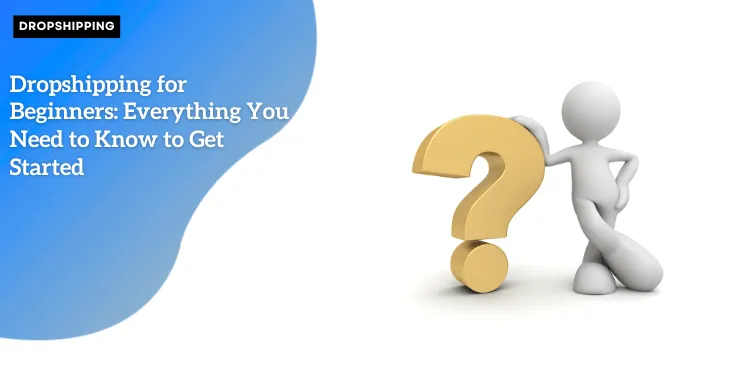Dropshipping for Beginners: Everything You Need to Know to Get Started

Anúncios
Introduction:
Dropshipping has become an incredibly popular business model for entrepreneurs looking to start an online business without the upfront investment in inventory.
With the increasing number of eCommerce platforms and access to a wide range of suppliers, dropshipping offers flexibility and convenience that traditional retail methods simply can’t match.
However, while the concept sounds appealing, there are still several key factors to understand before diving in.
In this detailed guide, we will address some of the most common questions about dropshipping.
Anúncios
By the end of this article, you will have a clearer understanding of how dropshipping works, the benefits it offers, and how you can incorporate it into your business successfully.

What is Dropshipping and How Does It Work?
Dropshipping is an order fulfillment model in which a store sells products to customers without holding inventory.
Anúncios
Instead, when a customer places an order, the retailer forwards the order details to a third-party supplier who then ships the product directly to the customer.
The store owner never physically handles the product, making it a more hands-off way to run an eCommerce business.
Here’s how the process works in a typical dropshipping setup:
- Product Listing: You display products on your online store at a price you determine.
- Customer Purchase: A customer visits your store and makes a purchase.
- Order Forwarded to Supplier: The order details are sent to the supplier, who has the product in stock.
- Product Fulfillment: The supplier sends the product directly to the customer, typically with your branding on the packaging.
- Profit Margin: You pay the supplier a wholesale price and keep the difference between the retail price and the wholesale price as your profit.
In essence, dropshipping allows you to operate an online store without worrying about the costs or risks associated with inventory management, warehousing, and logistics.
However, this convenience comes with its own set of challenges, which we will explore later.
How Do I Incorporate Dropshipping into My Business?
If you already have an established online presence or store, adding dropshipping can be an easy and effective way to expand your product range without worrying about storage or logistics.
For those who are new to the concept, starting from scratch is also quite manageable.
Here’s how you can incorporate dropshipping into your business:
- Research Your Niche: Identify products that will resonate with your target audience and complement your existing offerings.
- Study the Market and Competitors: Investigate what products your competitors are selling, how they price them, and how they’re marketing their dropshipping products.
- Choose the Right Supplier: This is the most important step. Look for reliable suppliers who offer high-quality products, timely shipping, and solid customer support. You can check reviews, ask for samples, and ensure they align with your business values.
- Set Up Your Dropshipping Process: Once you’ve selected your supplier, establish a system for processing orders and managing your store. You may need to integrate software for order management, customer service, and tracking.
- Promote and Market Your Products: List your new dropshipping products on your website, and market them using social media, paid ads, and email campaigns. Make sure to clearly communicate any changes in shipping times or other logistics to your customers.
By following these simple steps, you can smoothly integrate dropshipping into your existing business model.
Is Dropshipping Legal?
Yes, dropshipping is entirely legal.
There is nothing inherently illegal about the business model itself.
The key legal considerations revolve around the supplier you work with and the type of products you sell.
It’s important to ensure that the products are legitimate and comply with local laws and regulations.
Common Legal Issues to Watch Out For:
| Challenge | Description |
|---|---|
| 🔍 Product Quality | You need to be confident that the products you’re selling match the descriptions and images listed on your website. Poor-quality products can lead to unhappy customers, negative reviews, and returns that could hurt your brand reputation. |
| 📦 Timely Shipping | Delays in order fulfillment can damage your relationship with your customers. If products don’t reach customers on time or as expected, you risk losing their trust—and potentially their business for good. |
| 💬 Customer Support | Excellent customer service is crucial. If there are issues with an order, your supplier must handle it promptly and professionally, so your customers don’t experience prolonged frustration. |
| ⚖️ Legal Compliance and Fraud Protection | It is essential to partner with suppliers who are not only trustworthy but also compliant with local and international trade laws. Additionally, fraud protection is vital to prevent unauthorized transactions and to protect both you and your customers. |
| 🚫 Counterfeit Products | Be cautious about suppliers who may sell counterfeit or trademark-infringing products. |
| 📜 Lack of Agreements | It’s important to have a clear dropshipping agreement in place with your supplier. This will help protect your business from potential disputes related to product quality, returns, or shipping delays. |
To avoid these potential pitfalls, always vet your suppliers carefully and make sure you have a Dropshipping Agreement Contract in place.
What Are the Benefits of Dropshipping?
There are many reasons why dropshipping is a popular business model, especially for new entrepreneurs.
Here are five key benefits that dropshipping offers:
- Low Startup Costs: Since you don’t need to purchase inventory upfront, dropshipping requires far less initial capital than traditional retail businesses.
- Reduced Risk: Because you don’t have to deal with unsold inventory or large overhead costs, dropshipping helps mitigate financial risks.
- Low Operating Costs: Dropshipping eliminates the need for warehousing, shipping, and storage costs, which can significantly reduce your operational expenses.
- Broad Product Offering: You can easily expand your product offerings without the need for physical storage space, enabling you to cater to a wider range of customer needs.
- Flexibility and Location Independence: As long as you have an internet connection, you can manage your dropshipping business from anywhere, providing flexibility in how and where you run your business.
Is Dropshipping Profitable?
Yes, dropshipping can be profitable, but success depends on a variety of factors, including your choice of products, your supplier, and your marketing strategies.
While the business model offers low startup costs and reduced financial risks, it’s important to note that the profit margins are typically lower than traditional retail.
This is because the supplier sets the prices, and you only earn the difference between the wholesale price and the retail price.
However, dropshipping allows you to focus on scaling your business quickly, and with the right marketing and product selection, profitability is achievable.
Many successful entrepreneurs have built multi-million dollar businesses through dropshipping by focusing on high-margin products and efficient marketing strategies.
Do I Need to Register a Business Entity to Dropship?
While you don’t need to register your business right away, it’s important to do so once you start generating consistent sales.
Registering your business will help you protect your personal assets, manage taxes, and build credibility with suppliers and customers.
Payment providers like PayPal, Stripe, and Shopify require that you have a registered business entity in order to process payments.
Therefore, while there is no immediate rush to formalize your business structure, it is something you’ll want to address as your business grows.
Is Dropshipping Allowed on eBay and Amazon?
Dropshipping on eBay: Yes, dropshipping is allowed on eBay, but it comes with specific rules.
For example, eBay requires you to be the seller of record for the product, meaning you’re responsible for handling returns, exchanges, and customer service, even if the product is fulfilled by a third party.
Dropshipping on Amazon: Dropshipping is also permitted on Amazon, but Amazon has strict policies.
Sellers must be the sole party responsible for processing orders and handling customer service.
If you’re dropshipping on Amazon, you cannot directly fulfill orders through other retailers (e.g., Walmart), and all orders must be shipped in a timely manner.
What Are Some Dropshipping Product Ideas?
If you’re not sure where to begin with your dropshipping business, consider these product ideas.
Many of these ideas cater to specific niche markets, which can help you stand out from the competition:
- 🎒 Custom-designed tote bags promoting causes or charities.
- 👕 Novelty t-shirts with humorous or trendy designs.
- 📚 Motivational or inspirational bookmarks.
- ⌚ Affordable watches and jewelry with unique designs.
- 🖋️ Personalized marketing merchandise like branded shirts, pens, and mugs.
- ☕ Funny and themed coffee mugs.
These ideas represent a broad range of industries and can easily be adapted to fit various niches.
Do Dropshippers Ship Internationally?
Shipping internationally is possible, but it depends on the supplier.
Some suppliers offer international shipping, while others may focus on specific regions.
Be aware that international shipping can be more expensive and time-consuming due to customs, duties, and paperwork.
Make sure to discuss international shipping options with your supplier and factor in additional shipping fees when pricing your products.
The Final Word
Dropshipping can be an incredibly useful and low-risk method for getting started in the world of eCommerce.
However, as with any business model, it comes with challenges, especially for newcomers.
The key to dropshipping success lies in careful research, strategic planning, and partnering with reliable suppliers.
As your business grows, you may decide to incorporate other business models or shift your focus, but dropshipping can serve as an excellent complement to an established business.
For those starting out, understanding the ins and outs of dropshipping will set you on the path to creating a successful online business.
By addressing the questions and considerations outlined in this guide, you’ll be well-equipped to take on the challenges of dropshipping and make informed decisions that will support your long-term success in the eCommerce space.
